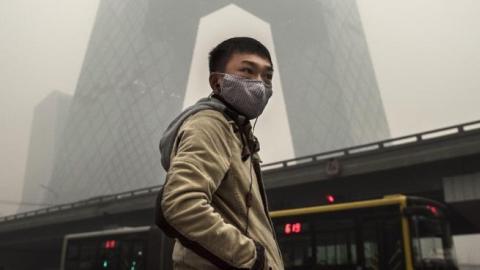Will 2014 be remembered as the year that environmental policies of the world’s major economies began to adapt to seriously combat climate change? In the final weeks of last year, it seemed possible.
In November, just days after the United States midterm elections shifted control of the Unites States Congress to Republicans, President Barack Obama traveled to Beijing and announced a new agreement between the United States and China to cut carbon emissions by 2030. Back in 2009, when Obama headed to Copenhagen for United Nations sponsored climate talks, he proposed more significant cuts by 2050, but China was not prepared to go along. Indeed, China had been reluctant to bear costs associated with reducing carbon emissions while it was still catching up to the incumbent world powers. Yet in November 2014, it appeared that the Obama administration had changed China’s stance.
Or had it? In fact, the Beijing deal would see China begin to cut its carbon emissions only after the United States made dramatic cuts to its own emissions first. But for the Obama administration, this was already in the works in the form of new United States Environmental Protection Agency carbon pollution standards. In June 2014, the EPA released its proposed for comment which, as drafted would require major shifts to electricity production in the United States by 2030.
Lawsuits in the United States courts and stiff opposition from the newly Republican Congress cast doubt on the potential for the United States to meet its commitments to Beijing on schedule. And the Obama administration will end before major carbon emissions cuts occur. But just imagine, if it did happen that the United States made dramatic cuts, and then China followed up with cuts of its own….
Wishful thinking about climate change action soon, with China doing its part later, could be heard in the halls of Lima, Peru in December at the United Nations Framework Convention on Climate Change.
In Lima, delegates pointed out that it would not be possible to reduce the warming of the atmosphere by two degrees centigrade without action by the United States and China, who combined, account for half of the world’s carbon emissions. The meeting ended with the hope that the United States would act as the Obama administration had pledged, and that China would eventually do likewise. In the meantime, other countries would do what they could, but since the Lima conference has firmly placed the responsibility for action on the United States (and later on China), all other countries would join in the New China Syndrome: watching Washington wrestle, while trying to promote economic growth at home.
Germany is among the countries most committed to addressing climate change. In 2010, Chancellor Angela Merkel announced the : Energiewende a policy target of 40 per cent reductions in emissions related to energy production by 2020. Yet since then, Germany has seen its emissions rise each year due in part, to a decision to shut down nuclear power plants in response to the Fukushima disaster in Japan, with replacement power coming from increasing coal-fired generation. While still committed to major reductions, in December 2014 the German government tweaked its goals to set more modest targets for reductions by 2020.
Amid signs of weaker economic growth, other countries are set to adjust their climate targets as well. In Brazil, the narrow re-election of Dilma Rouseff as president in 2014 was followed by her selection of a relatively centrist, pro-business and pro-growth cabinet. This, and the fact that she barely mentioned the climate during the election campaign, suggests growth will take precedence over carbon reductions.
After India’s 2014 election, new President Narendra Modi has made economic growth and development top priorities, and has courted investment in energy production in India with pro-business policies. Meanwhile, in 2014 Australia elected a Liberal government headed by Prime Minister Tony Abbott, who quickly repealed the country’s carbon tax.
Canada has enjoyed better economic growth than most major economies during the global down turn of the past few years. And it could benefit from United States’ mandates for carbon reductions if Canadian hydroelectricity is designated an acceptable alternative by United States regulators and export sales grow. There are a variety of provincial policies related to energy production and combatting climate change, ranging from British Columbia’s carbon tax and Alberta’s carbon trading system in the West to a range of agreements signed by the governments of Ontario and Quebec in November on energy production and climate cooperation. Critics of the Harper government complain that Canada’s position in the United Nations climate talks – that a national interest in fostering access to United States markets and supply chains will lead Canada to act only when the Unites States policy approach to climate is clear – both underestimate provincial contributions and suspect perhaps that Harper is an outlier. In fact, Harper’s approach illustrated the New China Syndrome before Xi Jinpeng’s policy did.
The prospects for United States climate action on the pace and scale proposed by the Obama administration diminish by the day in Washington. Such dramatic changes have always been difficult, by constitutional design, in the United States. There is less consensus about the direction and causes of climate changes in the United States today than when Obama first took office, and the United States public distrusts the national elites in both parties, and the business and environmental communities.
One reason for this distrust is that United States politics has focused on what appear to be elite priorities at the expense of economic growth and recovery. The energy and environment debate has exposed this gulf between citizens and their representatives like few other issues in recent years.
The result may be a new twist on the New China Syndrome beyond 2016 – as the United States waits for the world to act on climate change first while its policymakers refocus on growth.



















